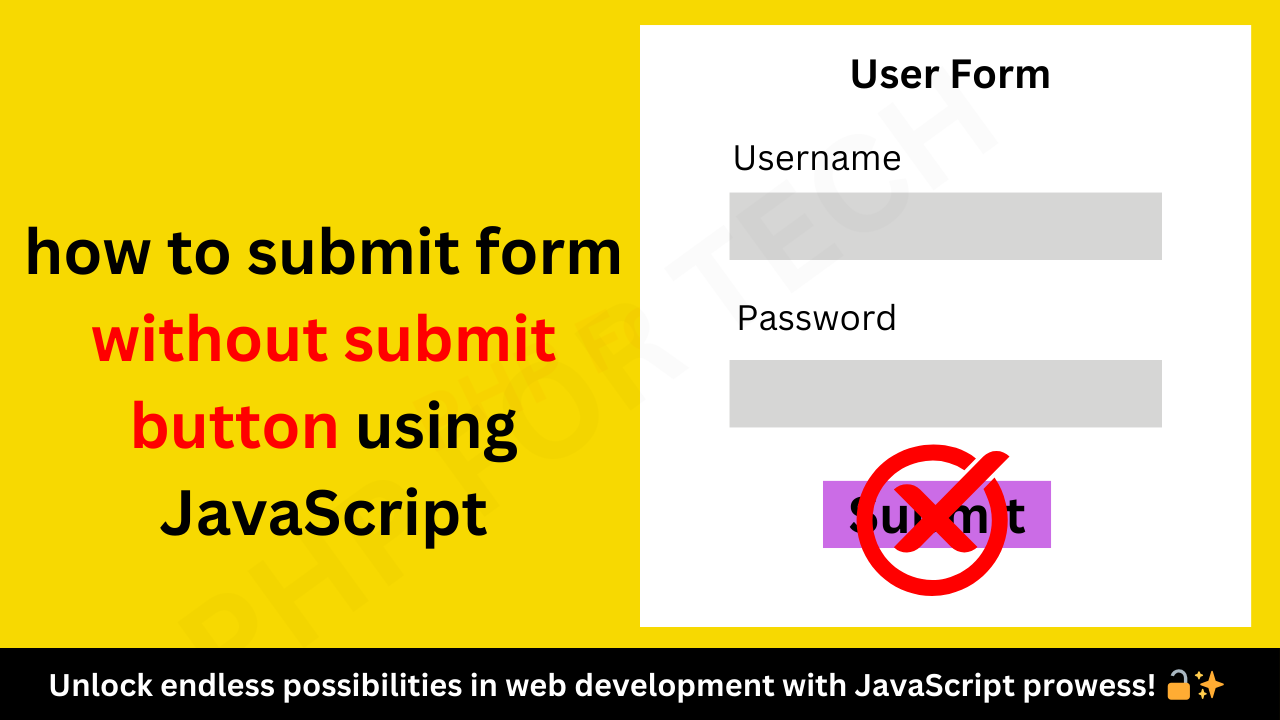how to submit form without submit button using JavaScript
In the realm of web development, creating forms is a fundamental aspect of building interactive websites and applications. Traditionally, form submission is facilitated by a submit button, which users click to send their input data to a server. However, modern web development often demands more dynamic and seamless user experiences. This is where JavaScript comes into play, enabling developers to innovate and streamline the form submission process without the need for a visible submit button.
Understanding the Need for Dynamic Form Submission:
Consider a scenario where users are required to fill out a form, such as a registration or login form, on a web page. In certain cases, users might expect the form to submit automatically once they’ve completed all the required fields, without having to locate and click a submit button. This seamless interaction can significantly enhance user experience by reducing friction and improving efficiency.
Benefits of Submitting Forms Without Buttons:
- Enhanced User Experience: Eliminating the need for a submit button can make the form submission process feel more intuitive and fluid for users.
- Simplified Interface: Removing extraneous buttons can declutter the user interface, focusing attention on the form fields themselves.
- Improved Accessibility: For users with mobility impairments or using assistive technologies, automatic form submission can offer a smoother browsing experience.
- Dynamic Interactivity: JavaScript-powered form submission allows developers to create dynamic, real-time feedback mechanisms, enhancing user engagement.
Prerequisites:
Before proceeding with this tutorial, it’s beneficial to have a basic understanding of HTML, CSS, and JavaScript. Additionally, familiarity with event handling and DOM manipulation in JavaScript will be advantageous.
Now, let’s dive into the implementation of form submission without a submit button using JavaScript.
Step 1: Constructing the HTML Form:
Begin by crafting a basic HTML form structure. For demonstration purposes, we’ll create a form with input fields for username and password.
<!DOCTYPE html>
<html lang="en">
<head>
<meta charset="UTF-8">
<meta name="viewport" content="width=device-width, initial-scale=1.0">
<title>Submit Form without Button</title>
</head>
<body>
<form id="myForm" action="#" method="POST">
<label for="username">Username:</label>
<input type="text" id="username" name="username"><br><br>
<label for="password">Password:</label>
<input type="text" id="password" name="password"><br><br>
</form>
<div id="submitMessage" style="display:none;">
Data submitted successfully!
</div>
Step 2: Implementing JavaScript Functionality:
Now, let’s add the JavaScript functionality to enable form submission without a submit button. We’ll listen for input events on the form fields and trigger submission when both the username and password fields are filled.
<script>
document.addEventListener("DOMContentLoaded", function(){
var form = document.getElementById("myForm");
var usernameInput = document.getElementById("username");
var passwordInput = document.getElementById("password");
var submitMessage = document.getElementById("submitMessage");
form.addEventListener("input", function() {
if (usernameInput.value.trim() !== "" && passwordInput.value.trim() !== "") {
setTimeout(function() {
submitMessage.style.display= "block";
}, 5000);
}
});
});
</script>
</body>
</html>
Explanation:
- We utilize the
addEventListenermethod to listen for theinputevent on the form. - Upon input changes, we check if both the username and password fields are filled.
- If both fields contain values, we display a success message after a delay of 5 seconds.
Step 3: Enhancing User Experience:
To provide a smoother user experience, consider implementing visual cues such as field validation or real-time feedback. Additionally, you can customize the success message to suit your application’s branding and tone.
Conclusion:
By harnessing the power of JavaScript, we’ve streamlined form submission without the need for a traditional submit button. This approach offers greater flexibility and interactivity, enhancing the overall user experience. Experiment with different techniques and adapt them to your specific project requirements. Happy coding!
